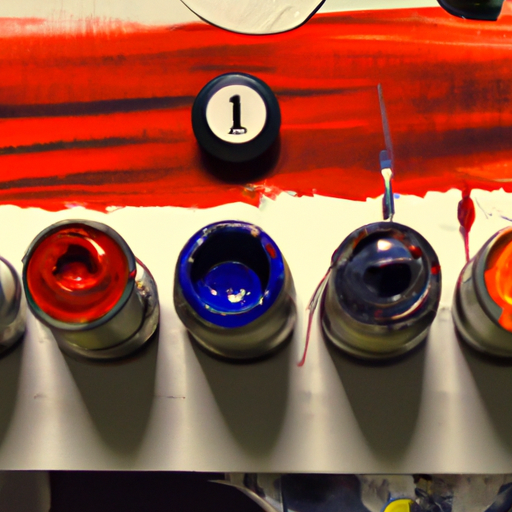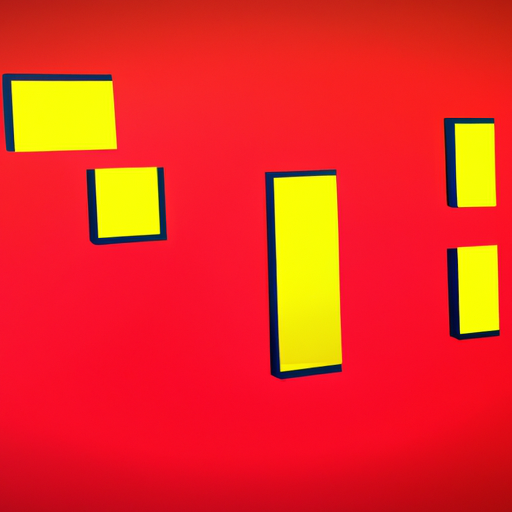
-
Table of Contents
Graphic Design Essentials: Elements and Principles

Graphic design is a powerful tool that combines creativity and communication to convey messages visually. Whether it’s a logo, website, or advertisement, graphic design plays a crucial role in capturing attention and delivering information effectively. To create visually appealing and impactful designs, designers must understand and apply the essential elements and principles of graphic design. In this article, we will explore these elements and principles in detail, providing valuable insights and examples along the way.
The Elements of Graphic Design
The elements of graphic design are the building blocks that designers use to create visually appealing compositions. These elements include:
- Line: Lines are the most basic element of design. They can be straight, curved, thick, thin, or even implied. Lines can be used to create shapes, divide space, or guide the viewer’s eye.
- Shape: Shapes are created when lines enclose a space. They can be geometric (such as squares, circles, or triangles) or organic (such as irregular or freeform shapes). Shapes can be used to convey meaning, create balance, or add visual interest.
- Color: Color is a powerful tool in graphic design. It can evoke emotions, convey meaning, and create visual hierarchy. Designers must understand color theory and use it effectively to communicate their message.
- Texture: Texture refers to the surface quality of a design element. It can be visual (such as the appearance of a rough or smooth surface) or tactile (such as the feel of a printed material). Texture adds depth and visual interest to a design.
- Typography: Typography is the art of arranging type to make written language readable and visually appealing. It involves selecting appropriate fonts, sizes, spacing, and formatting to enhance the overall design.
- Space: Space refers to the area around and within design elements. It can be positive (filled with content) or negative (empty). Proper use of space helps create balance, hierarchy, and visual flow in a design.
By understanding and utilizing these elements effectively, designers can create visually engaging and cohesive designs that capture attention and communicate effectively.
The Principles of Graphic Design
The principles of graphic design are guidelines that help designers organize and arrange the elements to create visually pleasing and effective compositions. These principles include:
- Balance: Balance refers to the distribution of visual weight in a design. It can be symmetrical (equal weight on both sides) or asymmetrical (unequal weight). Proper balance creates stability and harmony in a design.
- Contrast: Contrast is the juxtaposition of different elements to create visual interest and emphasis. It can be achieved through variations in color, size, shape, or texture. Contrast helps guide the viewer’s eye and highlight important information.
- Emphasis: Emphasis is the focal point or center of interest in a design. It helps draw the viewer’s attention and create hierarchy. Designers can use color, size, position, or contrast to create emphasis.
- Rhythm: Rhythm refers to the repetition or pattern of elements in a design. It creates a sense of movement and visual flow. Designers can use rhythm to guide the viewer’s eye and create a sense of unity.
- Unity: Unity is the visual harmony and coherence of a design. It is achieved through the consistent use of elements and principles. Unity helps create a sense of completeness and professionalism in a design.
- Proportion: Proportion is the relationship between different elements in a design. It helps create a sense of scale and balance. Designers must consider proportion when arranging elements to ensure visual harmony.
By applying these principles, designers can create visually appealing and effective designs that communicate the intended message clearly and efficiently.
Case Studies: Applying Elements and Principles in Graphic Design
Let’s explore some real-world examples of how graphic designers have applied the elements and principles of graphic design to create impactful designs:
Example 1: Apple
Apple is known for its minimalist and sleek designs. They effectively use the element of line to create clean and simple shapes in their product designs. The use of negative space and balanced composition creates a sense of harmony and elegance. Apple also applies the principle of contrast by using bold typography and vibrant colors to create emphasis and draw attention to key elements.
Example 2: Nike
Nike’s logo is a perfect example of how simplicity and shape can create a powerful design. The iconic swoosh represents movement and speed, conveying the brand’s core values. Nike also applies the principle of rhythm in their advertisements by using repetitive patterns and dynamic compositions to create a sense of energy and excitement.
Example 3: Coca-Cola
Coca-Cola’s use of color is a key element in their branding. The vibrant red color evokes feelings of excitement and passion, while the white typography creates contrast and emphasis. Coca-Cola also applies the principle of proportion by maintaining a consistent logo size and placement across different marketing materials, creating a sense of visual harmony and recognition.
Conclusion
Graphic design is a powerful tool that combines creativity and communication. By understanding and applying the essential elements and principles of graphic design, designers can create visually appealing and impactful designs that capture attention and deliver messages effectively. The elements of line, shape, color, texture, typography, and space provide the building blocks for design, while the principles of balance, contrast, emphasis, rhythm, unity, and proportion guide the arrangement and organization of these elements. By studying successful case studies like Apple, Nike, and Coca-Cola, designers can gain valuable insights and inspiration for their own work. So, whether you’re a professional designer or someone interested in the world of graphic design, remember to embrace these essentials and unleash your creativity to create stunning visual experiences.
